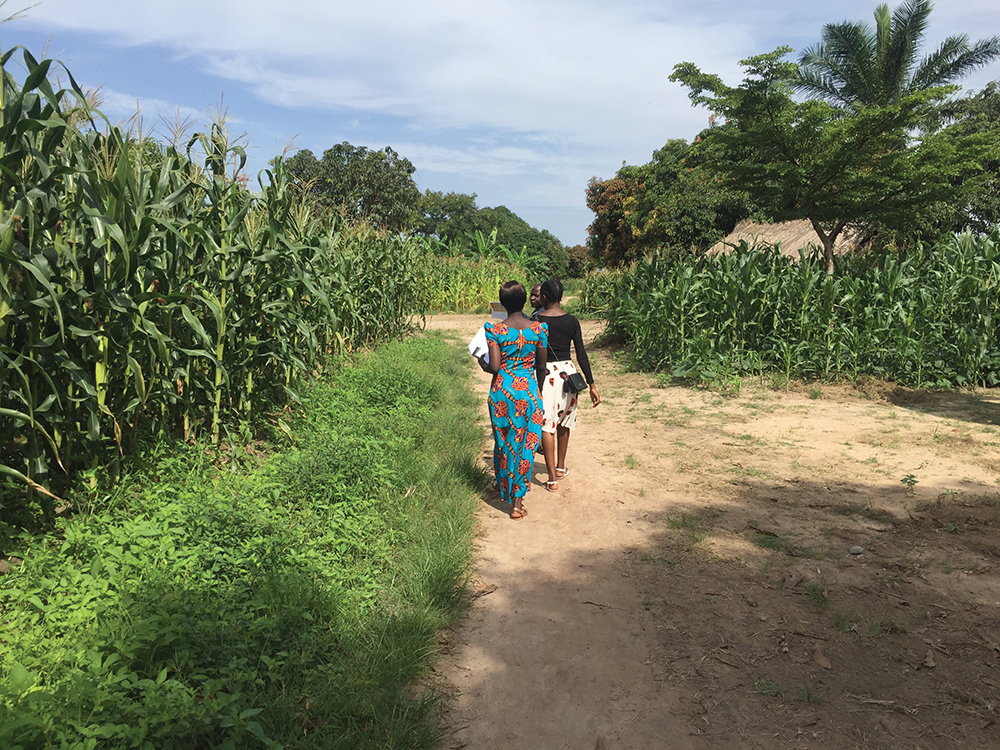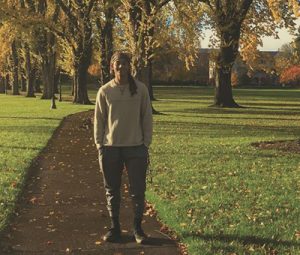Corinne Walters decided to study civil engineering at Oregon State because, “a high school math teacher told me I would be a good civil engineer,” she says.
She took an introduction to forest engineering class her freshman year to fulfill a requirement, but instead, found a passion.

“My professor, Jim Kiser, Richard Strachan Scholar in Fire and Silviculture, taught us all the best things about forestry,” Walters remembers. “So, I decided to switch my major to forest engineering.”
She says the allure of working outside instead of behind a desk on a computer all day was enticing. Walters’s parents are both in the forest industry, but she never considered following in their footsteps. She also never thought she would study abroad.
“There’s a lot of pressure as an engineering student to finish all your coursework, so I just didn’t think I would have the time and flexibility to make it work,” she says.
But when Walters found out about a short-term, faculty-led study abroad experience in Chile, she realized that studying abroad was possible for her.
“It was so fun, and it opened my eyes to all the possibilities that are out there,” she says. “The College of Forestry offers so much for students when it comes to international experiences.”
After her initial experience in Chile, she became hungry for more international exposure.
“I’d interned for great companies here in the U.S., and I wanted to do something different and out of my comfort zone for the summer before my senior year,” she says.
She ended up in New Zealand, working for one of the largest timber companies in the country.
Together with another intern, Walters worked on the layout for permanent sample plots.
“They measure the height, diameter and form of the trees about every five years to get an idea of how they’re growing,” Walters says. “They work with a lot of different seedlings from different locations and compare seed sources in an attempt to grow the healthiest trees they can to produce the best wood products.”
Walters graduated in June 2019 and is working for Miami Corporation in McMinnville. She says her international experience gave her knowledge to draw upon during the interview process.
“Most of all, it’s great to be connected to the international forest industry,” she says. “I think that’s important.”
She says she plans on leveraging international relationships moving forward.
“For example, there are a lot of similarities between the forest industry in the Pacific Northwest and New Zealand,” she says. “If I have a question, I can call up my old supervisor or coworker and see what he or she thinks about an issue or technique.”
Walters encourages other students to take advantage of international experiences.
“It’s easy to get connected if you want to,” she says. “The forestry community is close-knit and brings people together all over the world.”
A version of this story appeared in the fall 2019 issue of Focus on Forestry, the alumni magazine of the Oregon State University College of Forestry. Learn more about international programs within the College of Forestry here.


 Robert Rose is a senior studying
Robert Rose is a senior studying  Senior Vanessa Mckinney is passionate about forestry, natural resources and conservation.
Senior Vanessa Mckinney is passionate about forestry, natural resources and conservation. The Oregon Forest Practices Act (FPA) is up for renewal in 2020. According to the State of Oregon, the FPA “sets standards for all commercial activities involving the establishment, management or harvesting of trees on Oregon’s forestlands.
The Oregon Forest Practices Act (FPA) is up for renewal in 2020. According to the State of Oregon, the FPA “sets standards for all commercial activities involving the establishment, management or harvesting of trees on Oregon’s forestlands. In FY 2017 and 2018, the College of Forestry and the
In FY 2017 and 2018, the College of Forestry and the  After a walk across the United States and an epic 48-hour experience in Grand Canyon National Park,
After a walk across the United States and an epic 48-hour experience in Grand Canyon National Park,  When Bill and Marion Collins moved onto 160 acres near Gold Hill in Jackson County, they had no idea what to do with their land or how to manage it.
When Bill and Marion Collins moved onto 160 acres near Gold Hill in Jackson County, they had no idea what to do with their land or how to manage it.
